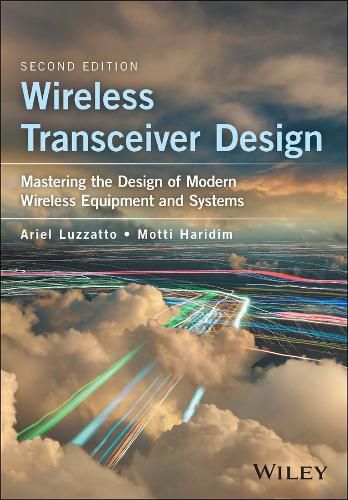Readings Newsletter
Become a Readings Member to make your shopping experience even easier.
Sign in or sign up for free!
You’re not far away from qualifying for FREE standard shipping within Australia
You’ve qualified for FREE standard shipping within Australia
The cart is loading…






Building upon the success of the first edition (2007), Wireless Transceiver Design 2nd Edition is an accessible textbook that explains the concepts of wireless transceiver design in detail. The architectures and the detailed design of both traditional and advanced all-digital wireless transceivers are discussed in a thorough and systematic manner, while carefully watching out for clarity and simplicity. Many practical examples and solved problems at the end of each chapter allow students to thoroughly understand the mechanisms involved, to build confidence, and enable them to readily make correct and practical use of the applicable results and formulas. From the instructors’ perspective, the book will enable the reader to build courses at different levels of depth, starting from the basic understanding, whilst allowing them to focus on particular elements of study. In addition to numerous fully-solved exercises, the authors include actual exemplary examination papers for instructors to use as a reference format for student evaluation.
The new edition has been adapted with instructors/lecturers, graduate/undergraduate students and RF engineers in mind. Non-RF engineers looking to acquire a basic understanding of the main related RF subjects will also find the book invaluable.
$9.00 standard shipping within Australia
FREE standard shipping within Australia for orders over $100.00
Express & International shipping calculated at checkout
Building upon the success of the first edition (2007), Wireless Transceiver Design 2nd Edition is an accessible textbook that explains the concepts of wireless transceiver design in detail. The architectures and the detailed design of both traditional and advanced all-digital wireless transceivers are discussed in a thorough and systematic manner, while carefully watching out for clarity and simplicity. Many practical examples and solved problems at the end of each chapter allow students to thoroughly understand the mechanisms involved, to build confidence, and enable them to readily make correct and practical use of the applicable results and formulas. From the instructors’ perspective, the book will enable the reader to build courses at different levels of depth, starting from the basic understanding, whilst allowing them to focus on particular elements of study. In addition to numerous fully-solved exercises, the authors include actual exemplary examination papers for instructors to use as a reference format for student evaluation.
The new edition has been adapted with instructors/lecturers, graduate/undergraduate students and RF engineers in mind. Non-RF engineers looking to acquire a basic understanding of the main related RF subjects will also find the book invaluable.